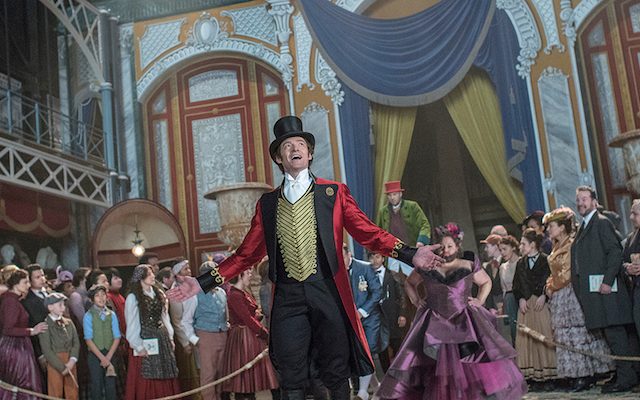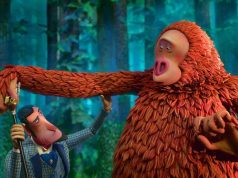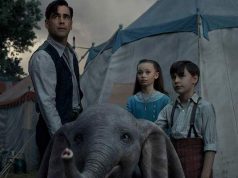
By the time I saw “The Greatest Showman,” my 13-year-old niece had seen it four times. She’s not interested in P.T. Barnum as a historical figure (she and the movie have that in common), but she does like cheesy pop music and boys with soft eyes, so the math adds up.
This is a full-blown, burst-into-song-while-you-walk-down-the-street kind of musical, aimed at teenage girls, gay men, senior citizens, and other people who already like musicals. That last part cannot be overstated. If you’re not a fan of glitzy, glossy, overacted, heart-on-your-sleeve singin’ and dancin’, you will not enjoy “The Greatest Showman.” If you’re lukewarm on musicals, this won’t be the one that turns you into a fan. It’s good, but it’s only good if you already like the thing that it is.
Which I do! I love beautiful, well-crafted, profound musicals with cleverly rhymed lyrics. Fortunately, I also enjoy shallow throwaway puff pieces with catchy tunes, lyrics that are purely functional, and dead-end subplots, which is what first-time director Michael Gracey energetically delivers. The content is old-fashioned and wholesome, but the aesthetic is frenetic and “Moulin Rouge!”-y, complete with anachronistic dialogue and modern orchestrations. (Actually, one of the big songs, “Come Alive,” sounds a great deal like De Barge’s “Rhythm of the Night,” so by “modern” I guess I mean circa 1985.)
The film never tells us what year it is or gives us a sense of how much time has passed, but Barnum lived from 1810 to 1891, so we’ll assume it’s the mid 1800s. Hugh Jackman plays Barnum starting at about age 20 (ahem), all the way through the creation of his first circus, which happened when Barnum was 60, though I don’t think he’s supposed to be that old when it happens in the movie. The real Barnum had a partner by the name of Bailey, but he’s been fictionalized into a guy called Carlyle (Zac Efron) who speaks in a suave Don Draper voice, and only the broadest strokes of Barnum’s biography remain intact.
A self-made man and the son of a poor tailor, Barnum marries the well-monied Charity (Michelle Williams), has two adoring daughters with her, then opens a Manhattan museum dedicated to oddities. It flops, but one of daughters gives him a suggestion: put some LIVING things in it. A call for “unique persons and curiosities” goes out, and soon Barnum has assembled a troupe of freaks: bearded lady (Keala Settle), dwarf (Sam Humphrey), a tattooed man (Shannon Holtzapffel), and so forth. Barnum subsequently becomes famous for “fake” oddities — which is confusing given that the movie only shows us the real ones — and wants to find a genuine talent. As soon as he does (a Swedish singer named Jenny Lind, played by Rebecca Ferguson), he turns his back on his beloved freaks, who sing a song about not being ashamed of who they are.
Meanwhile, Carlyle develops a crush on trapeze artist Anne Wheeler (Zendaya), then is embarrassed because she’s black, then gets over it, end of subplot.
The screenplay, by Jenny Bicks (“Sex and the City”) and Bill Condon (who adapted “Chicago” and “Dreamgirls”), is a pastiche of hopes-and-dreams tropes with serviceable dialogue, all enthusiastically performed by an eager cast. But the songs are the important thing, and these nine (by “La La Land” duo Benj Pasek and Justin Paul) are unapologetically average, taking no chances, content to be just good enough. (The boldest choice is rhyming “little” with “it’ll” in a power ballad.) Are there better movie musicals? Yes, dozens. Are there any in theaters right now, though? Nope, this is it. Enjoy!
B- (1 hr., 45 min.; )





